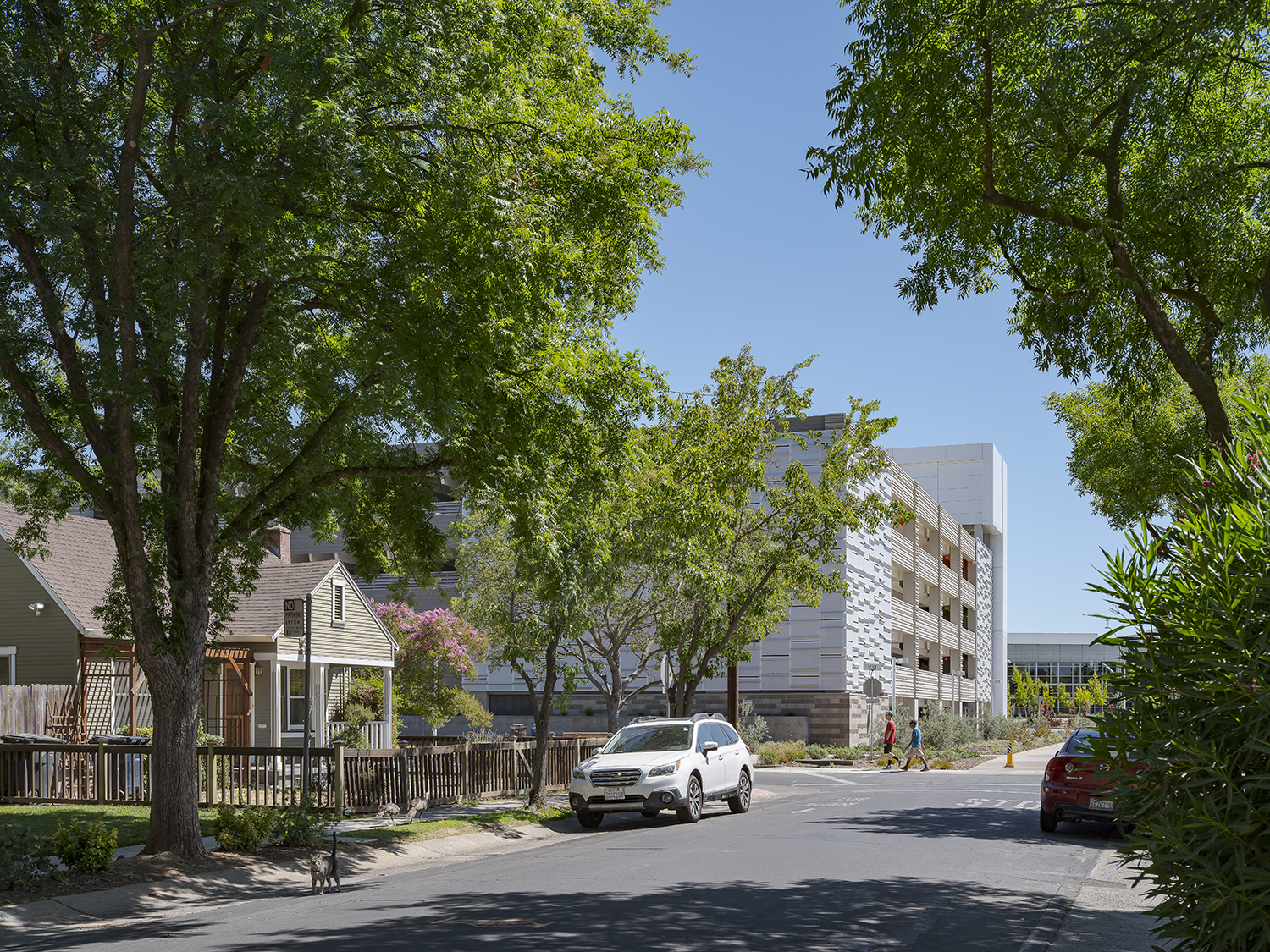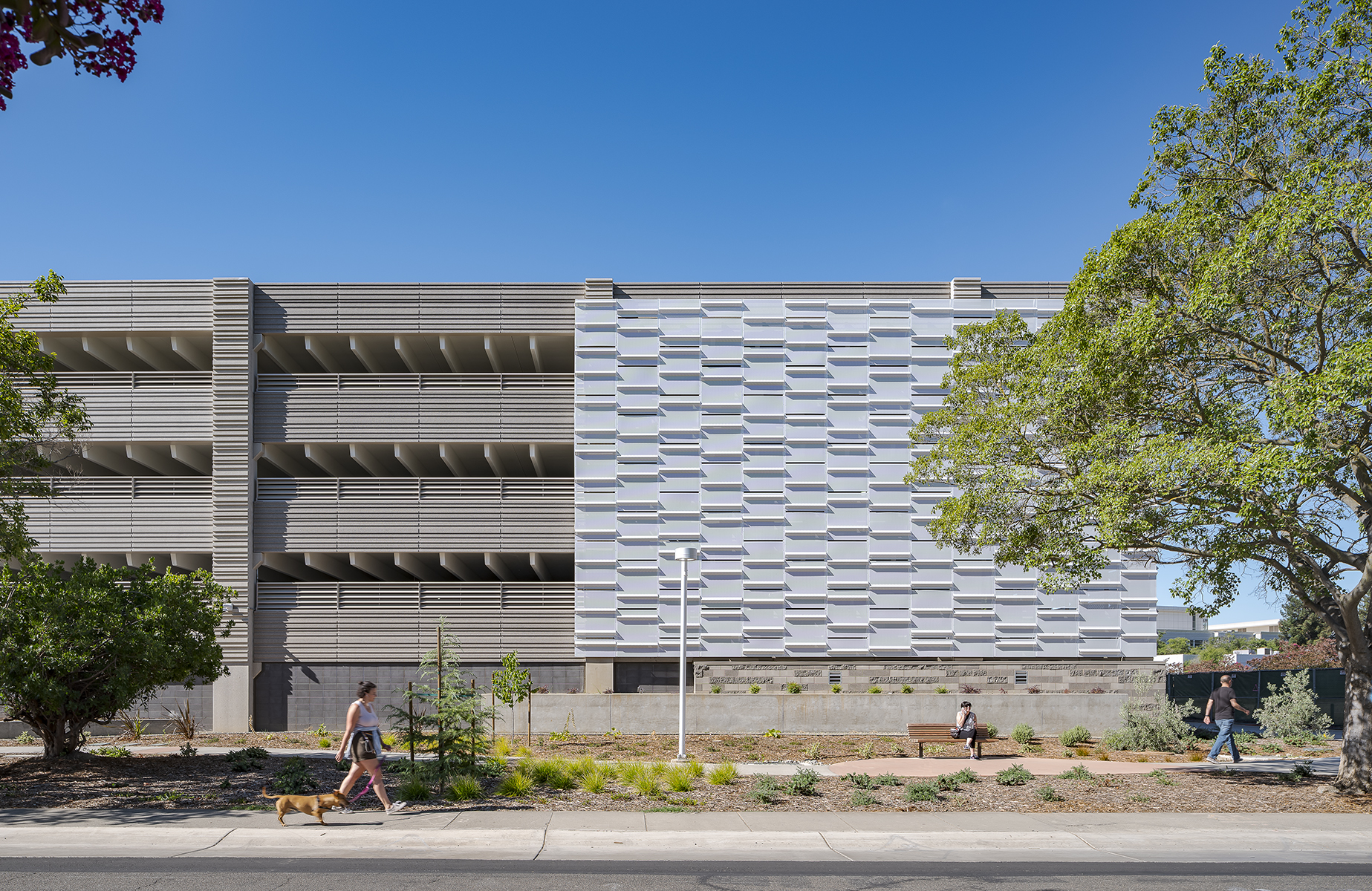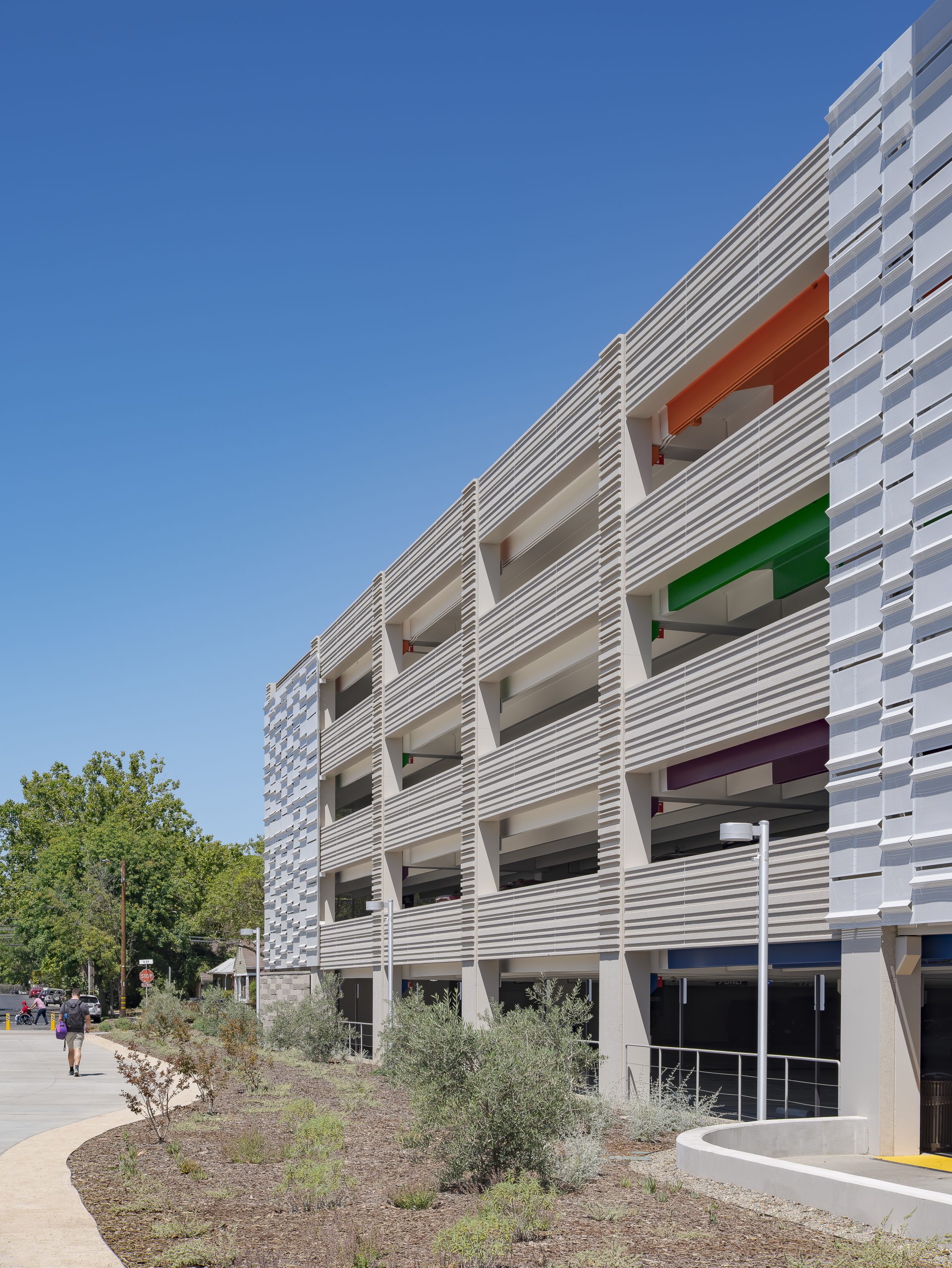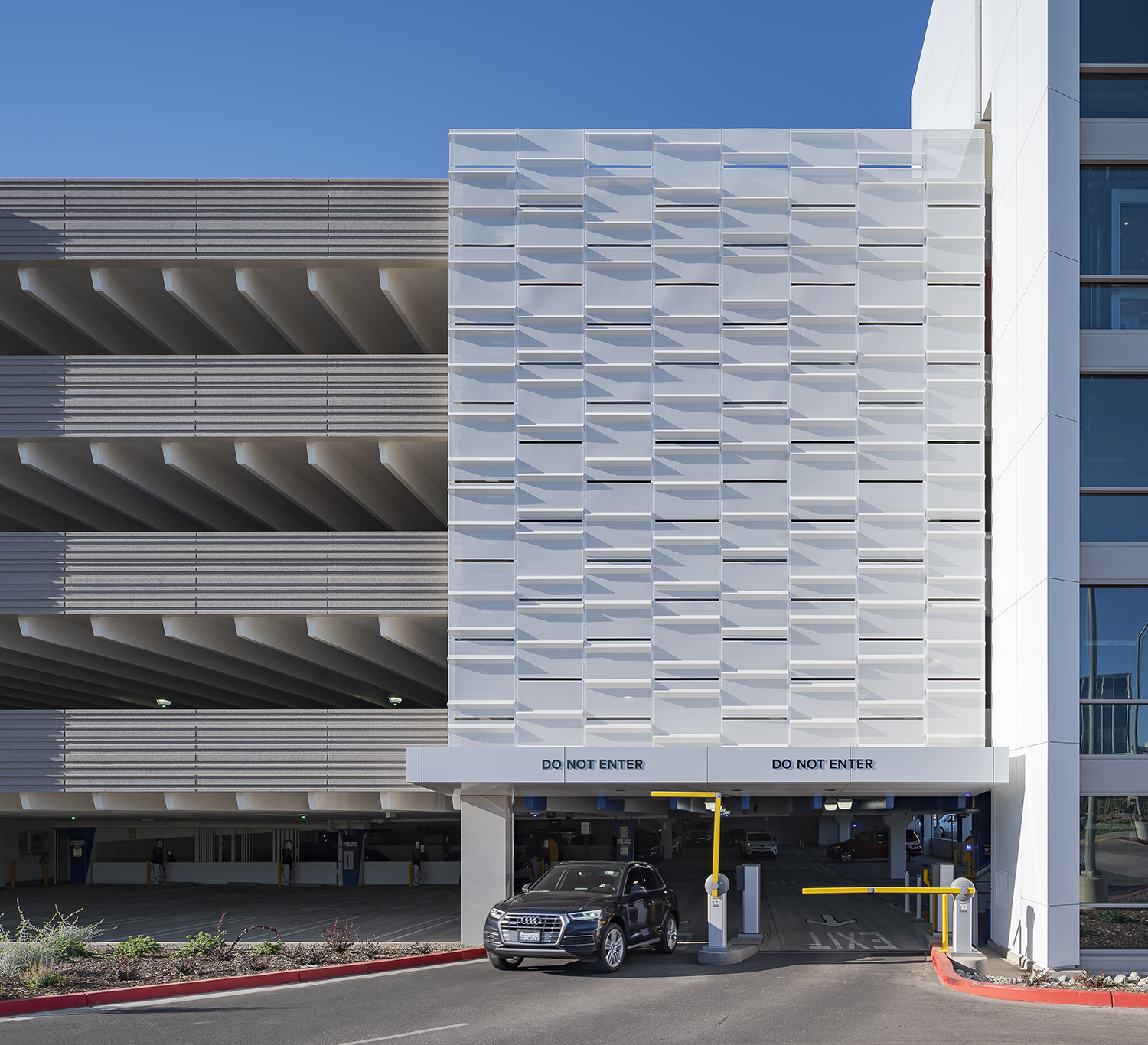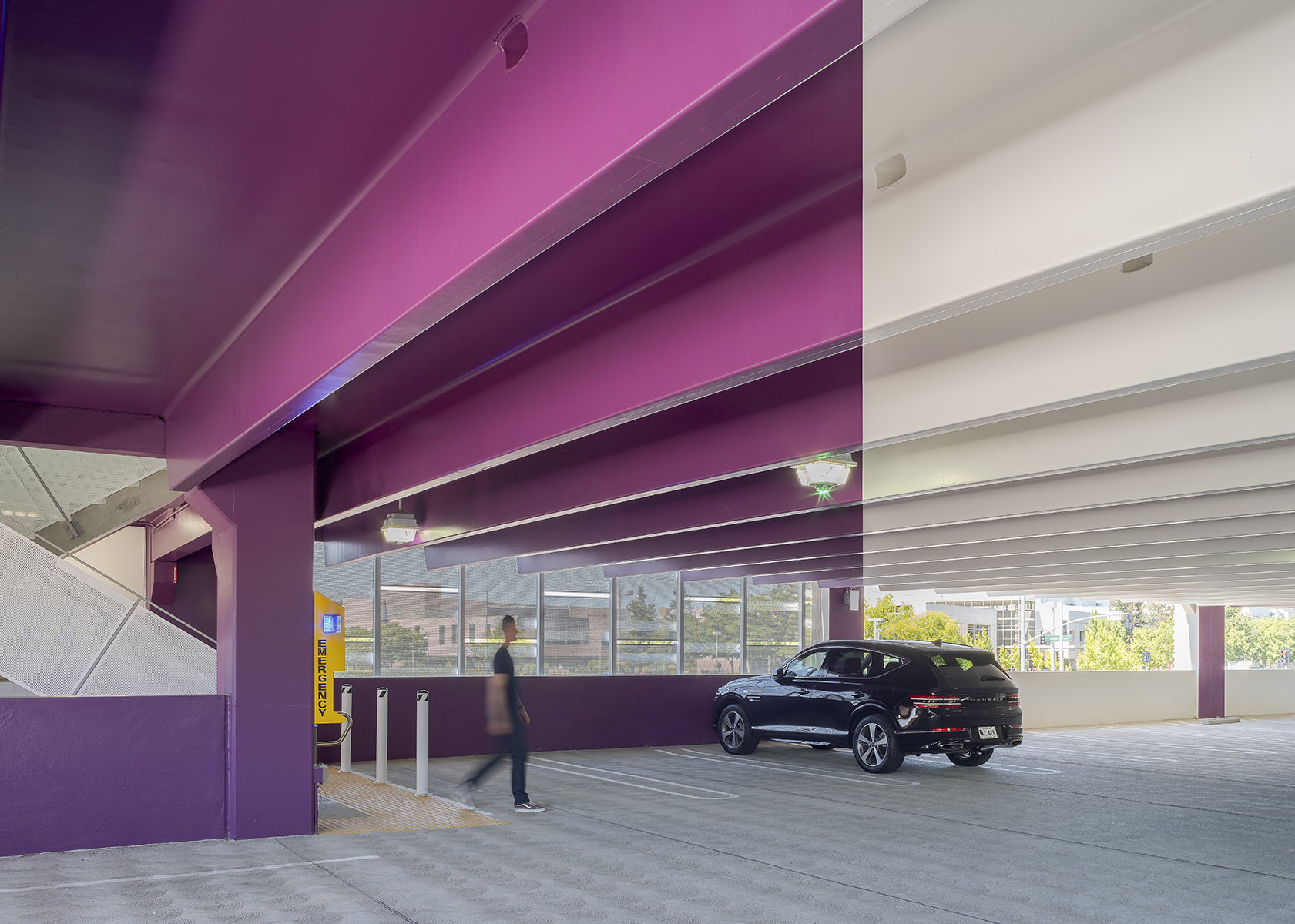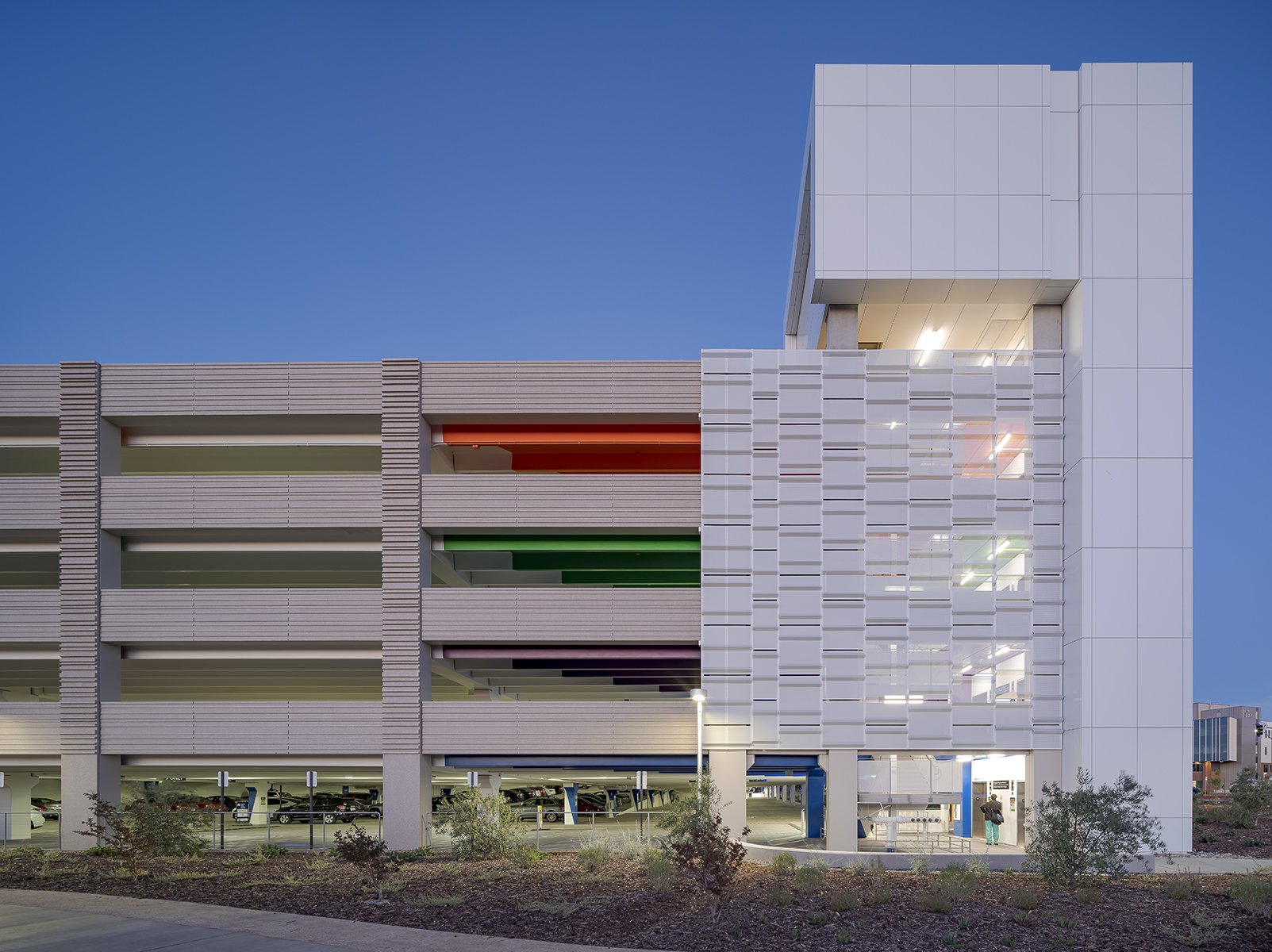The Future of Parking Structures
August 15, 2022
From the Summer 2022 issue of Ascent Magazine.
The following is a portion of the full article.
By Monica Schultes and Susan Bady
Owners are planning precast concrete parking structures that can take on future configurations while meeting today’s needs
Times are changing and the future of parking structures is murky: will they evolve into vehicle storage facilities or will they take on new forms? Across the country, owners and facility managers are starting to rethink how parking structures fit into their future needs. In addition to storing vehicles, some parking structures provide electric vehicle charging stations. Others embrace alternative means of transportation by storing bicycles and e-scooters, or by carving out space for ride-share services and public transit pick-up and drop-off points. The following precast concrete parking structures represent different approaches to housing vehicles. These projects combine innovative design strategies while incorporating quality, safety, sustainability, and schedule efficiencies.
Demand for parking at the University of California Davis (UC Davis) Health campus exceeded capacity on the Sacramento property. Additional development would further reduce available parking, so it was critical to design and construct a parking structure to meet the future needs of the campus. The solution was Parking Structure 4, a new five-level, employee permit parking facility.
Like a Good Neighbor
Parking Structure 4 is adjacent to a residential neighborhood, which influenced many aspects of the design, says Ginger Thompson, project designer with Dreyfuss + Blackford Architecture. The design-build team was challenged with creating a structure that would minimize noise and light spillage and meet the design aesthetic.
“A lot of attention and intention was paid to how we treated the elevation that faced the Elmhurst neighborhood residences. Folded scrim panels were used to obscure car headlights around the ramps and downplay the mass of the structure,” says Thompson. To address residential concerns, the team oriented vehicular flow to the south, which reduces noise and light pollution. Horizontal louvers further control light spillage and provide privacy. The design-build team continues to work to adjust the light trespass so that it meets the anticipated levels appropriate for the neighborhood.
Once employees park their vehicles, they can take advantage of shuttles, bike shelters, or walking paths across campus. Thompson points out that special attention was paid to separating pedestrians from vehicular traffic and providing safe connections to the hospital.
According to Steve Voss, project executive for Clark Pacific, it was important to take advantage of the limited noise a precast concrete project generates. “Even though the medical campus is active around the clock, our work was restricted from 7 a.m. to 6 p.m., in respect to the adjacent neighborhood,” he says. The impact of precast installation is limited to truck traffic and the crane for just a short duration. Despite the time constraints, the precast concrete was installed in record time.
Collaboration
With the added benefit of prior collaboration on projects, onboarding the new client with an old team was accomplished quickly. While the owner had previously used precast concrete, they were not familiar with a total–precast concrete system. After the team reviewed the distinctive up-front schedule and the importance of communication, the project moved forward quickly. Collaboration was key. “I would attribute the project’s success to how effective the team was. There was a high level of communication, respect, trust, and collaboration, not just the main players, but across the board. It was a very creative and collaborative effort every step of the way, which is evident in the results.”
Design-Builder
With Clark Pacific serving two roles as design-builder and precast concrete producer, challenges were anticipated and handled quickly and efficiently. “Having Clark Pacific in both roles smoothed out the whole process,” says Thompson. “They already understand how to design and manufacture precast, and as the general contractor, they kept the job moving forward.”
The integration of manufacturer and contractor perspectives paid off with minimal disruption to the medical campus. “The
lighter that we can tread by minimizing trip traffic and removing labor on-site, the better,” Voss adds. Speed and nimbleness were key to overcoming not just the constraints of working within a medical campus, but the urban setting and neighborhood restrictions. “They all lent themselves to getting in and out as quickly as possible,” says Voss. The 1200-space
parking structure was completed in just 14 months, with precast concrete installation limited to 65 days.
Campus Context
The campus’ aesthetics, integral color, and formliners throughout the precast concrete elements provide textures and tones. “Precast is a fantastic product. It gives us so much architectural and design flexibility,” says Thompson. The scrim panels and louvers also emulate the architecture of other buildings on campus.
The architectural precast concrete finishes include a light, warm tan color. The hybrid moment frame system is structurally and architecturally appealing. “We like the strong rhythm of the columns and we added a thicker formliner for a horizontal projection of two inches. It gives nice contrast and the ability to add depth and to move away from a flat façade,” says Thompson.
Parking Guide
Color-coded signage allows users to easily find stairs and elevators. No matter where you stand in the parking structure, everything is white except the exit lobbies, which are doused in wayfinding colors specific to each level. An angled paint technique on the ramp columns ties the users into the space.
Taking advantage of the precast concrete system, the design uses a shorter spandrel beam to create larger openings. This increases the daylight entering the structure but still blocks the headlights. The well-lit structure provides passive security for health-care workers using the facility. The design team selected a parking guidance system that combines wayfinding and lighting. ECO Falcon cameras detect available spaces, and the wireless guidance system shows the number of available stalls on each level. Then the light fixture illuminates the status of the space through bright LEDs on smart sensors.
Prefab Elevator
To embrace the spirit of off-site manufacturing, Clark Pacific used prefabricated elevator towers. “We purchased the prefabricated framed shafts and coordinated with a local elevator subcontractor to bring in cars that were preinstalled,” says Voss. The shrinkwrapped elevator modules were stood up with a crane. Always looking to advance prefabrication, this could have been done in precast concrete, but would have been an extremely heavy lift. “This was the best fit for the client.”
EV Charging Stations
The California Building Standards Commission requires a minimum of 10% electric vehicle (EV) charging stations at new, nonresidential sites, with plans to increase the amount of EV-capable (infrastructure only) stalls from 10% to 20% of the total parking count.
The electrification of new parking structures and greater accommodation of EVs is not inexpensive. While precast concrete
systems can readily provide the infrastructure for this electrification, there is a significant upgrade to the electrical capacity of the structure. The new employee permit parking facility is built for future photovoltaic arrays on the roof and the project team is pursuing Parksmart Silver—a U.S. Green Building Council sustainability rating program specifically for parking structures.
Project Spotlight: University of California, Davis Health Parking Structure 4
Location: Sacramento, Calif.
Designer: Dreyfuss + Blackford Architecture, Sacramento, Calif.
Owner: University of California Davis Health, Sacramento, Calif.
Contractor: Clark Pacific, West Sacramento, Calif.
Engineer: Watry, San Jose, Calif.
PCI-Certified Precast Concrete Producer: Clark Pacific, West Sacramento, Calif.
Precast Concrete Components: double tees and hybrid moment frame
